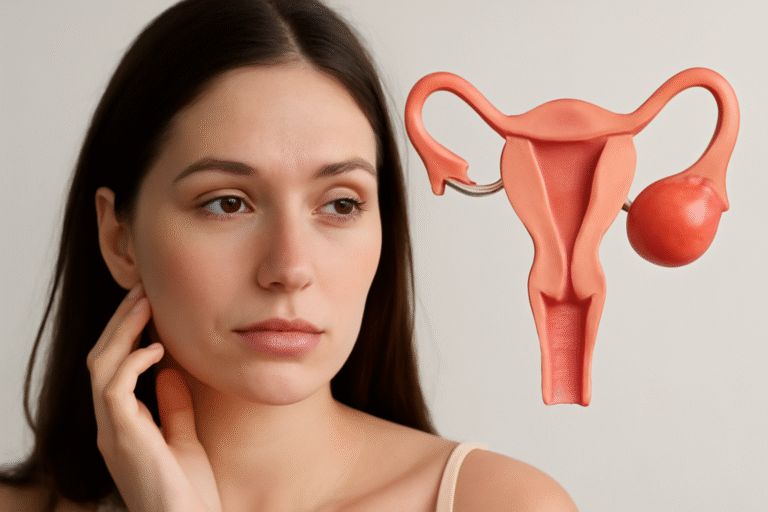The want to become pregnant in a certain time period is both thrilling and anxiety provoking. Although pregnancy finally relies on several biological variables, studies indicate that knowing your reproductive window and maximizing conception techniques may greatly increase your possibilities. From cycle monitoring to lifestyle changes, this all-encompassing book takes you through every important stage, therefore providing you the greatest chance to conceive this month.
Understanding Your Fertility Window: The Foundation of Conception
The 5-6 days before and includes ovulation make up your reproductive window. This time range results from
- The ovulated egg stays viable for only 12-24 hours
- Sperm may survive in the female reproductive system for up to 5 days.
Peak fertility occurs the day before ovulation; the most fertile days are the three days before ovulation. Missing this window is the most frequent cause of failed conception efforts.
Precision Ovulation Tracking: Beyond Calendar Methods
Although cycle monitoring applications provide projections, these techniques are much more precise when paired with:
1. Basal Body Temperature (BBT) Tracking
- Requires a specific thermometer (accurate to 0.1°F).
- Must be recorded immediately upon awakening, before any activity.
- Shows a continuous temperature increase of 0.5-1°F after ovulation.
2. Cervical Mucus Monitoring
- Fertile mucus resembles raw egg white (clear, stretchy, slippery).
- This consistency helps sperm survive and move effectively.
- Usually emerges 2-3 days before ovulation.
3. Ovulation Predictor Kits (OPKs)
Also Read: Best Time For Conception
- Detect the luteinizing hormone (LH) spike that precedes ovulation by 24-36 hours.
- First morning urine isn’t best – test between 10am-8pm.
- Digital testing remove uncertainty in interpretation.
The Science of Timing Intercourse for Maximum Conception Odds
Studies from the National Institute of Environmental Health Sciences show:
- Pregnancy rates peak at 33% when intercourse occurs the day before ovulation
- Rates remain high (25-30%) for the two days preceding ovulation
- Daily intercourse doesn’t improve odds over every other day
- Begin intercourse when you notice fertile-quality cervical mucus
- Continue every other day until ovulation is confirmed
- Focus on the 3 days before expected ovulation
Nutritional Optimization for Enhanced Fertility
A Harvard School of Public Health study identified key dietary factors:
Fertility-Boosting Foods:
- Full-fat dairy has hormones that boost conception.
- Cold-water fish (omega-3s lower inflammation)
- Colorful fruits/vegetables (antioxidants protect reproductive cells)
Essential Nutrients:
- Folate (400-800 mcg daily) Important for early fetal development .
- Vitamin D (2000 IU daily) Low levels are linked to infertility.
- CoQ10 (200-300 mg daily) Enhances sperm and egg quality
- Omega-3s (1000 mg DHA/EPA) Supports hormone synthesis
Lifestyle Factors That Impact Monthly Conception Odds
Stress Management:
Chronic stress raises cortisol, which can:
- Disrupt hypothalamus function (regulates reproductive hormones)
- Potentially delay or prevent ovulation
- Twenty minutes of daily mindfulness meditation.
- Moderate physical activity (walking, yoga)
- Sufficient sleep: 7 to 8 hours each night.
Environmental Considerations:
- Avoid BPA (found in plastics and receipts) – mimics estrogen
- Choose organic when possible to reduce pesticide exposure
- Replace non-stick cookware with ceramic or stainless steel
Early Pregnancy Indicators: What to Watch For
Although symptoms differ, early indicators might be:
- Implantation bleeding (light spotting 6-12 days post-ovulation)
- Elevated basal body temperature beyond luteal phase
- Changes in cervical position and hardness
- Unusual tiredness or breast soreness
Maintaining Emotional Wellbeing During the Process
Emotionally, the two-week gap between ovulation and testing may be difficult. Some strategies are:
- Limiting obsessive symptom spotting
- Engaging in diverting activities
- Joining a supportive TTC community
- Practicing gratitude journaling
Conclusion
Although no approach ensures conception in a certain month, using these research-backed techniques increases your odds. Even under perfect circumstances, healthy couples’ monthly conception rates usually fall between 20 and 30%. The ideal potential environment for natural conception is created by tracking your cycles, optimizing timing, and preserving reproductive health.




